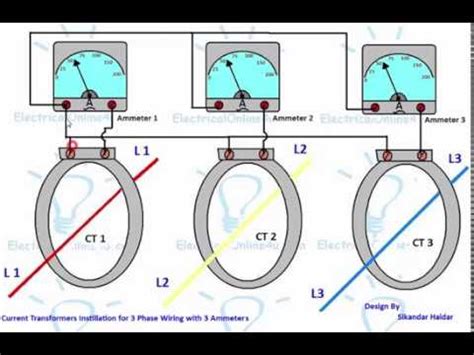How To Wire An Amp Meter
Ronan Farrow
Mar 26, 2025 · 3 min read

Table of Contents
How to Wire an Ammeter: A Comprehensive Guide
Knowing how to wire an ammeter correctly is crucial for anyone working with electrical circuits. An ammeter, short for ammeter, measures the current (in amperes or amps) flowing through a circuit. Improper wiring can lead to inaccurate readings, damage to the meter, or even serious injury. This guide provides a step-by-step explanation on how to safely and accurately wire an ammeter into various circuit configurations.
Understanding Ammeter Types and Connections
Ammeters are broadly categorized into two types based on their connection method:
1. In-Line Ammeters:
These are wired in series with the circuit. This means the current flows through the ammeter. This is the most common type for measuring the total current in a circuit. Crucially, never connect an in-line ammeter in parallel with a circuit component, as this can damage the meter and potentially create a short circuit.
2. Clamp-on Ammeters (Clamp Meters):
These meters use a current transformer clamp to measure current without breaking the circuit. This is non-invasive and incredibly useful for measuring current in already-installed circuits. They are generally safer to use as there's no direct connection to the live wires.
Wiring an In-Line Ammeter: A Step-by-Step Guide
WARNING: Always disconnect the power supply before working with any electrical circuit. Even seemingly low-voltage circuits can present a danger. If you are unsure about any step, consult a qualified electrician.
Tools and Materials:
- Ammeter (with appropriate current rating)
- Wire strippers/cutters
- Electrical tape
- Screwdrivers (suitable for your meter and circuit)
- Test light or multimeter (for verifying power is off)
Steps:
-
Power OFF: Ensure the power is completely disconnected from the circuit you're working on. Use a test light or multimeter to verify that no power is present.
-
Identify Circuit Components: Determine which part of the circuit you want to measure the current flowing through.
-
Open the Circuit: Disconnect one wire from the circuit at the point where you want to measure the current. This creates a break in the circuit.
-
Connect the Ammeter: Connect one lead of the ammeter to the disconnected wire. Connect the other ammeter lead to the point where the wire was originally connected. Ensure the polarity is correct. Most ammeters have clearly marked positive (+) and negative (-) terminals; connecting them incorrectly can damage the meter. The current must flow into the positive terminal and out the negative terminal. Check your meter's manual for specific instructions.
-
Restore Power: Carefully restore power to the circuit.
-
Take Reading: Observe the current reading on the ammeter's display.
-
Power OFF: Once the reading is taken, turn off the power again.
-
Reconnect the Circuit: Carefully reconnect the wire that was initially disconnected.
Wiring a Clamp-on Ammeter
Clamp-on ammeters are significantly easier to use. Simply:
- Power ON: Leave the power ON.
- Clamp the Meter: Clamp the meter's jaws around the wire carrying the current you want to measure. Ensure the wire is fully within the clamp's jaws.
- Take Reading: The current reading will be displayed on the meter.
- Remove the Meter: Remove the meter from the wire once you've obtained the reading.
Choosing the Right Ammeter
Selecting the correct ammeter is critical. Consider the following:
- Current Rating: The ammeter must have a current rating equal to or greater than the expected current in the circuit. Using an ammeter with too low a rating will damage it.
- Accuracy: Consider the accuracy requirements of your application.
- Type: Choose between an in-line or clamp-on ammeter based on your needs and the accessibility of the circuit.
By following these steps and precautions, you can safely and accurately wire an ammeter to measure the current in your electrical circuits. Remember safety is paramount – always prioritize safety procedures and consult an expert if you have any doubts.
Featured Posts
Also read the following articles
| Article Title | Date |
|---|---|
| How To Soften A Stiff Leather Jacket | Mar 26, 2025 |
| How To Tension A Timing Belt | Mar 26, 2025 |
| How To Seal Paper Mache | Mar 26, 2025 |
| How To Treat Bv And Uti At The Same Time | Mar 26, 2025 |
| How To Tan A Coyote Tail | Mar 26, 2025 |
Latest Posts
Thank you for visiting our website which covers about How To Wire An Amp Meter . We hope the information provided has been useful to you. Feel free to contact us if you have any questions or need further assistance. See you next time and don't miss to bookmark.
